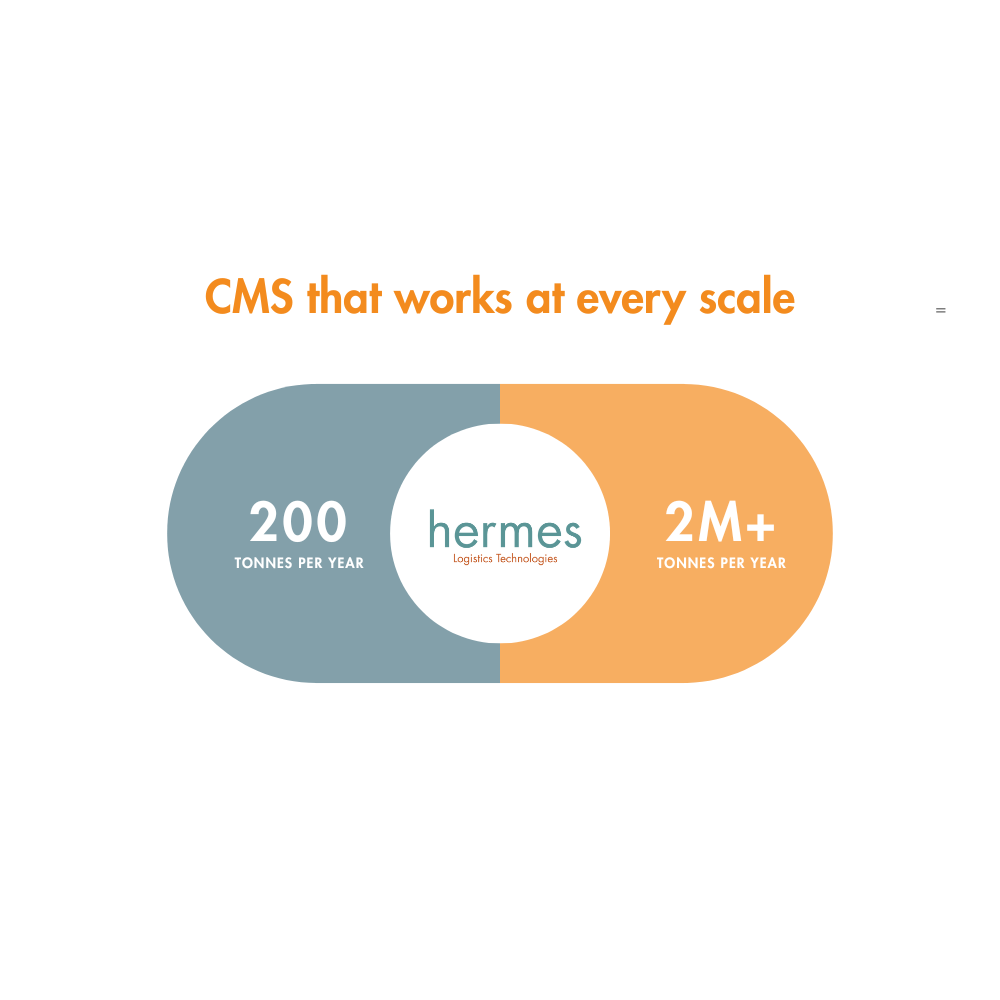CMS that works at every scale: from less than 200 to more than 2M tonnes annually
The Hermes ecosystem is built for range. Some stations move 15 tonnes a month; others push more than 200,000. Same platform. Same outcomes: faster turns, fewer exceptions, steadier operations, happier airline customers. The biggest gains in cargo handling aren’t purely about scale. They’re about flow, first-time pass, and control.
The myth: “Low volume doesn’t justify a system”
Low doesn’t mean simple. A smaller station still runs acceptance, build/break, messaging, handovers, storage moves, security checks, and exceptions. The operational pain is fixed: re-keying, handoffs, status chasing, late updates, and avoidable rework. Hermes removes those frictions regardless of how many tonnes you push.
What actually drives ROI
- First-time pass: Clean capture at acceptance, smart validations, straight-through messaging.
- Exception containment: Earlier detection of mismatches; fewer “where is my cargo?” calls; quicker close-outs.
- Predictable turnaround: Standardised workflows and live status for tighter ramps and steadier door/slot use.
- Data you can trust: Single-point capture and consistent events for better decisions, faster.
- Staff ramp-up: Role-based screens and simple flows shorten time to productivity.
- Airline experience: Clear milestones and proactive updates reduce escalations.
- Future-ready operations: API-first and community integrations make change plug-and-play.
How it plays at different ends of the scale
~200 t/year (single station, lean team)
- Do the job once: capture at the counter, auto-enrich, auto-message.
- Keep the day calm: fewer detours, fewer callbacks, clear “what’s next”.
- Look bigger than you are: consistent service, reliable status, tidy handovers.
- Room to grow: add modules and connections as traffic or customer mix changes — no rebuilds.
2M+ t/year (multi-station, complex mix)
- Throughput under pressure: smoother build/break, smarter door and ULD control, fewer blockages.
- Network-level visibility: standard events across stations, faster issue isolation, cleaner cross-dock moves.
- SLA assurance: KPIs in the flow, so teams can act, not just report.
- Integration at scale: customs, CCS, airline systems, warehouse automation straight-through, not swivel-chair.
The HLT effect, summarised
- Less re-keying → fewer errors → fewer exceptions.
- Clear statuses → fewer calls → more predictable turns.
- Consistent UI → faster ramp-up → steadier rosters.
- Reliable data → better planning → calmer ops.
Implementation without the drama
Start with acceptance and warehouse. Turn on straight-through messaging. Add billing, ULD, door control, or extra integrations when you’re ready. Same platform, same data model, no dead ends. Teams feel the lift immediately, and not after a long transformation.
Hermes works – and it’s worth it – at every volume.
